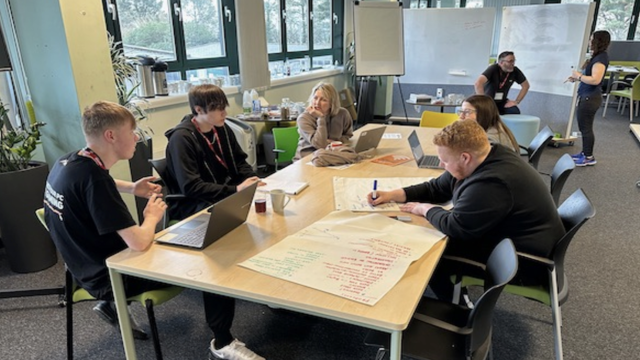It feels like everyone has been trying to crack the problem of how to consistently report environmental, social and governance (ESG) metrics forever. Each year there are new frameworks, new standards and new metrics in vogue, almost always in the form of acronyms that leave sustainability practitioners spewing alphabet soup.
I suspect that some of the difficulty in solving the challenge comes from the framing of it. Our model for successful consistent reporting is grounded in financial performance. International Accounting Standards have been around and widely adopted since the early 70’s, and so it’s no surprise those standards are what we turn to when looking for a new system. Even non-financial KPIs are measured in relation to the impact on a company's bottom line.
Applying that model to ESG work, where the impact is on people and our planet, is bound to be fraught with challenge. People are infinitely more complex than balance sheets.
Introducing the CSRD
In June, the European Parliament adopted the Corporate Sustainability Reporting Directive (CSRD) which means that, as of FY24, qualifying companies will be required to bring their sustainability reporting in line with their financial reporting.
This is something we’ve been practising since we started. Committed to radical transparency, we've already been showcasing ESG numbers next to our financials in all reporting. I’ve attended investor meetings alongside our CFO, articulating our commercial and impact performance as one story. We have board-level oversight for sustainability, in exactly the same way as we do for our financials.
Yet still, this is the biggest-ever legislative change in ESG reporting, with over 50,000 businesses required to report against the new standards.
At this scale, we may see adoption far beyond the reach of the EU. CSRD may be the catalyst the world needs to move towards truly consistent and comparable ESG reporting. Maybe, or maybe we'll just see another reshuffle of annual reports, replacing terms that have gone out of fashion - which happens all too regularly with the fast-moving world of ESG - with references to shiny new reporting standards.
What is a double materiality assessment?
The interesting change that is coming from the directive which is getting everybody excited is the principle of double materiality. We’ve been thinking about the impact that business operations have on stakeholders (think GRI) and also about the impact that ESG factors have on business (think SASB & TCFD) for a while, but usually quite separately. CSRD requires businesses to think about issues more granularly to assess whether they are material from an outside-in perspective, an inside-out perspective, or both.
One of the key barriers we’ve faced in achieving consistent reporting is that companies' impacts, and the issues that impact them, are not consistent. Organisations like GRI have tried to address this before with industry-specific standards, but they don’t go far enough. Every business has a unique relationship with its stakeholders through both the work that they do and the way that they operate. CSRD invites, and indeed requires, businesses to complete a double materiality assessment to ensure that their ESG reporting is relevant and bespoke to their context.
How we’re responding
We last did a materiality assessment in 2019 when the world and our business looked very different. We’re now embarking on our own double materiality assessment, with years of robust ESG data and an ecosystem of people who share the ambition to positively impact society.
We’re excited to talk to our stakeholders to find out which issues they think are most important and reinvigorate our social and environmental work. We hope that the outcome of the assessment will be a collective articulation of the purpose of the business. An assurance that the existence of TPXimpact is a positive thing for the planet, our people and our wider communities.
Luckily, we have the perfect skill sets in order to run projects like this; from ESG specialists to our Deliberative Democracy team, with their unique approach to stakeholder engagement, to our Organisational Design team who are experts in bringing strategies to life and our Data & Insights team who can make sure that we get long term engagement in this work by making our ESG reporting simple and engaging.
Even if the CSRD falls short of aligning businesses' ESG reporting globally, we’re confident that through the double materiality assessment, the requirements will at least bring our people and stakeholders together to align on all we want to be.
If you’re thinking about your double materiality assessment and want to chat, please reach out to Bryony.
Latest stories
Transformation is for everyone. We love sharing our thoughts, approaches, learning and research all gained from the work we do.

An epic hackathon with students from City College Plymouth
Discover how we’re empowering students, fostering creativity and building digital skills for the future.
Read more
B-cause businesses can and should do better
Sharing how our commitment to serving all our stakeholders extends beyond B Corp certification
Read more
B Corp, B-cause change starts within
It’s B Corp Month, and we’re sharing a look at what we think it means to be a B Corp. This way forward!
Read more

